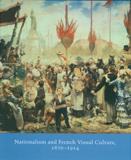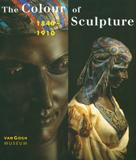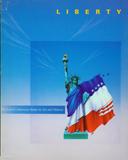June Hargrove

Professor Emerita, Nineteenth-Century European Painting and Sculpture, Art History and Archaeology
Education
Ph.D., , Institute of Fine Arts of New York University
Research Expertise
Early Modern Studies
Global Modernism
Professor Emerita June Hargrove focuses on European art, particularly French, from the eighteenth century to the twentieth century. Her scholarship investigates the historical context of art, with an emphasis on the impact of global transformations on style and content in painting and sculpture. She explores the multinational cultural dynamics that shape contemporary thinking. Her work promotes an interdisciplinary theoretical model that exams the ways in which art enables us to understand the past and its relationship to the present.
The French Government honored her with the Chevalier of the Order of Arts and Letters for scholarship about the cultural heritage of France. The College Art Association selected her for the Distinguished Teacher of Art History Award in 2013, recognizing that she maintained high standards in her own scholarship, while manifesting a fundamental passion for teaching, for making ideas come alive, to generations of students.
Professor Hargrove produced the first synthesis of the life and art of Paul Gauguin (1848-1903) for Citadelles et Mazenod, Paris. She is currently writing a book on Gauguin in the South Seas, reconsidering his years in Tahiti and the Marquesas Islands, for Taschen Verlag, Cologne. The volume with be published in three languages.
Her principal additional publications are Paris: An Open-Air Pantheon. The History of Monuments to Great Men, Albert Ernest Carrier-Belleuse, Liberty: the French-American Statue in Art and History, and two edited volumes, Nationalism and French Visual Culture, 1870-1914, co-edited with Neil McWilliam, and The French Academy: Classicism and its Antagonists. Her articles have appeared in The Art Bulletin, the Revue de l'Art, the Van Gogh Studies, Sculpture Journal, the Revue du Louvre, the Bulletin des Monuments Historiques, and other journals as well as published colloquia.
Her landmark exhibition Albert Carrier-Belleuse: the Master of Rodin was the first to document the extraordinary talent of this sculptor, who had a defining impact on his most famous studio assistant, Auguste Rodin. She has collaborated on additional exhibitions, such as The Colour of Sculpture, an exhibition for the Van Gogh Museum in Amsterdam. Professor Hargrove has participated in numerous symposia and conferences and contributed to festschrifts and anthologies. She serves on the scientific committee for the Revue de l'Art and the editorial board of Studiolo, the journal of the French Academy in Rome. She participates in the Advisory Committee of the French Sculpture Census. Among the institutions that have supported her research are the National Endowment for the Humanities, the American Council of Learned Societies, the Deutschesforum für Kunstgeschichte, Paris, the Centre André Chastel, Paris-Sorbonne, and the Graduate Research Board of the University of Maryland. She was the Van Gogh Fellow in a joint position as the invited scholar for the University of Amsterdam and the Van Gogh Museum.
Publications
Gauguin
This book situates his artistic production in the context of his life in a new way, balancing myth with reality
Author/Lead: June Hargrove
While mapping his biography from his childhood in Peru to his death in the Marquesas Islands, Paul Gauguin (1848-1903) examines his artistic development through the style and content of specific works at the intersection of his personal experiences and spiritual transformation. As it tracks the evolution of his career from a self-taught Sunday painter to a seminal force shaping the direction of modern art, it explores how his unorthodox approach to materials and techniques stimulated his radical innovations—mutually reinforced by his experiments as painter, sculptor, ceramist, draftsman, printmaker, and author.
Nationalism and French Visual Culture, 1870-1914
This volume explores the relationship between the arts and political conflict and the impact of nationalism during the early modern period in France.
Author/Lead: June Hargrove
Read More about Nationalism and French Visual Culture, 1870-1914
Albert Carrier-Belleuse: the Master of Rodin
The catalog documents the marriage of art and industry created by this versatile sculptor whose art became synonymous with the Second Empire in France and defined the decorative arts of the Third Republic
Author/Lead: June Hargrove
The work of this prolific master ranged from sensuous Salon marbles to luxury objects in gold and modest utensils in zinc. He played a major role in integrating the decorative arts with fine art. The young Rodin collaborated with him intermittently over two decades.
The Colour of Sculpture: 1840-1910
This exhibition catalog covers a short history of Colour in sculpture in the 19th century - 1840-1910.
Author/Lead: June Hargrove
The Statues of Paris: An Open-Air Pantheon
This work traces the history of public sculpture in Paris.
Author/Lead: June Hargrove
Liberty: The French-American Statues in Art and History
A fully illustrated history of the Statue of Liberty from a French and American perspective.
Author/Lead: June Hargrove
Read More about Liberty: The French-American Statues in Art and History

